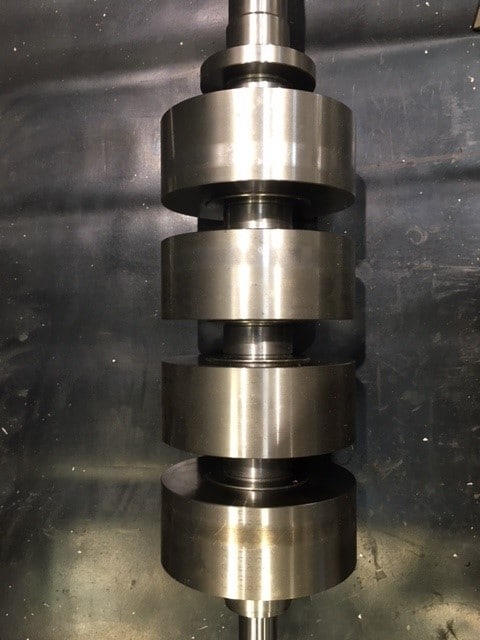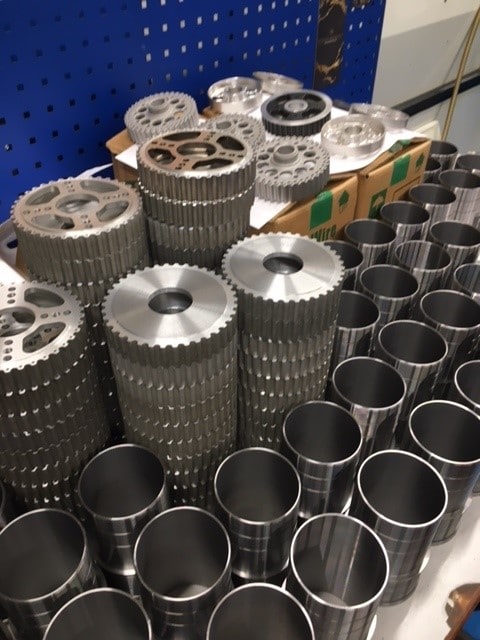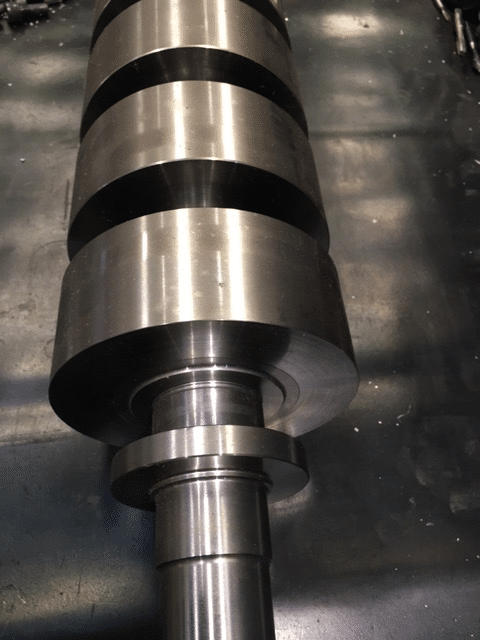A&M provides specialist precision CNC turning services, our turning experience ranges from components for marine and space missions to moulding tools for an adult entertainment product, Formula 1 components and nuclear parts.
CNC Turning is the core manufacturing process for making cylindrical parts using a range of contours and threads. We secure a metal workpiece on a CNC lathe and turn the piece with the lathe whilst a single point cutting tool works at the material, removing unwanted material to create the desired shape and dimensions.
Turning has evolved over the last two centuries. At the height of the Industrial Revolution, turning required turret lathes using shafts with revolving drums to manufacture cylindrical parts. Whilst it did require highly skilled operators using rotating cams, these lathes were amongst the first machines to create parts using a semi-automated process.
This turning production predominantly remained until the 1960s, when breakthroughs in CNC technology enabled development in large CNC turning centres which improved accuracy but ensured a slow production time.
Today, CNC turning is largely automated from start to finish, improving accuracy and guaranteeing time efficiency.
What is the Turning Process?
First, our operators create a CAD (computer-aided design) digital file of the part, which is a computerised blueprint. Then, our highly skilled engineers implement a code used for operating the machine from the CAD file, providing the CNC machinery with the specific dimensions required.
The CNC lathe is set up and the workpiece is clamped to the lathe. The CNC machine controls the lathe, rotating the main spindle and moving the various axis so that the piece is worked accordingly.
A mandrel is a cylinder, usually steel, used to support a partly machined workpiece while it is being finished. It has a core around which parts can be bent, whilst other material is forged or moulded.
CNC turning is essential for manufacturing tooling fixtures. At A&M, tooling fixtures are one of the leading parts we produce, so turning is therefore critical to our work. Over recent years, we have invested in the latest CNC turning and grooving tools to ensure the best results for customers, compared to manual lathes which reduce reliability and speed of production.
For example, our Mazak quick turn 250MY gives us the capability to turn and mill (insert hyperlink to milling page here) in a single operation, saving time by avoiding two different machine set ups.
Steps in the Turning Process?
Step One
Create a CAD digital file of the part
Step Two
Create the code to operate the machine from the CAD file
Step Three
Set up the CNC lathe
Step Four
Manufacturing, using the CNC machine to control the lathe to ensure that the parts are made to the exact specifications required.



Turning process of Inconel
Inconel is an exotic metal used frequently for aerospace parts which can damage traditional cutting tools. A&M have developed machining and turning techniques so aerospace parts can be manufactured by adaptable changes of the cutting tips.
CNC turning is complemented by our cylindrical grinding operations. Cylindrical grinding shapes the outside of an object being worked and for it to work, the piece must be constantly rotating, which is an integral part of the turning process. We have 9 cylindrical grinders, allowing multiple production operations at one time.
CNC Turning Frequently Asked Questions
What is CNC turning?
CNC turning is a reductive manufacturing method which uses a lathe and cutting tool to remove material from a workpiece. This is a predetermined, automated action controlled through a computer programme, to create a desired shape from the workpiece. CNC turning rotates the workpiece, whilst feeding the cutting tooling towards the workpiece, in order to achieve this.